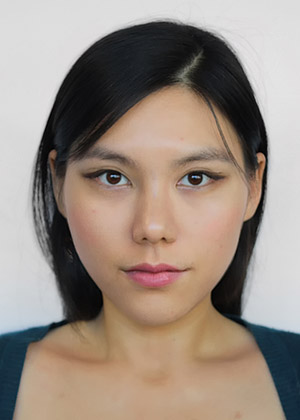USTC Astronomy Seminar Series: 2020 Fall
Astrochemistry tool:from the star formation to the cradle of life
冯思轶 博士
East Asian Observatory
2020/9/28, 4:00pm , the 19th-floor Observatory Hall

报告人:
Siyi Feng received her Ph.D. degree in Physics and Astronomy from the Ruprecht Karl University of Heidelberg & Max-PlanckInstitute for Astronomy (Heidelberg, Germany) in 2015. She is currently working in Academia Sinica Institute of Astronomy and Astrophysics as a postdoc fellow for East Asian Core Observatories Association. Her research interests are the molecular complexity in the ISM and the origin of life. Siyi Feng is an expert in submillimeter interferometry and astrochemistry. She has more than 700 hrs’ observational data as principal investigator (21 PI proposals, with more than 80% successful proposing rate) and more than 1300 hrs’ observational data as co-investigator. Using the world’s leading interferometers (JVLA, ALMA, SMA, NOEMA) and single-dish telescopes (IRAM-30 m, Nobeyama-45 m, APEX-10 m, Effelsberg-100 m, CSO-10 m), she is currently leading an international team for several multi-wavelength line-image survey projects.摘要:
Thanks to the performance of the state-of-the-art radio telescopes, increasing detections ofmolecular species in various ISM conditions improves our knowledge of the Universe. Where dowe come from? Are we alone in the Universe? How are the formation and destruction processesof these interstellar molecules? What can these detections tell us about the star and planetformation? What is the link between the complex organics in the ISM and the seed of our lives?These fundamental questions are still unclear. In this seminar, I will start by presenting severalmulti-wavelength line imaging survey projects I led, covering all the evolutionary stages of highmass and low-mass star-forming regions. Using IRAM-30m, NOEMA, JVLA, and ALMA, weunveiled key chemical processes, such as Sulfur grain reservoir, deuterium fractionation, and pcscale CO depletion in the initial conditions and feedback of star-forming environment. Later, I will also introduce some of my on-going observation projects and projects in plan. These projects aim at (1) understanding the complex organics, Phosphorus bearing species, and prebiotic speciesfrom infrared dark clouds, to protoplanetary disks, and photon-dominated or photo-dissociationregions in the next ALMA Cycle, and (2) understanding how universal are the building blocks oflife in the extragalactic system and planetary system for the next decade. These observations aredesigned to understand the missing link from the star-forming region to the planetary system. 邮编:230026 ,
邮编:230026 ,  联系电话: 0551-63601861
联系电话: 0551-63601861 Email:
Email: